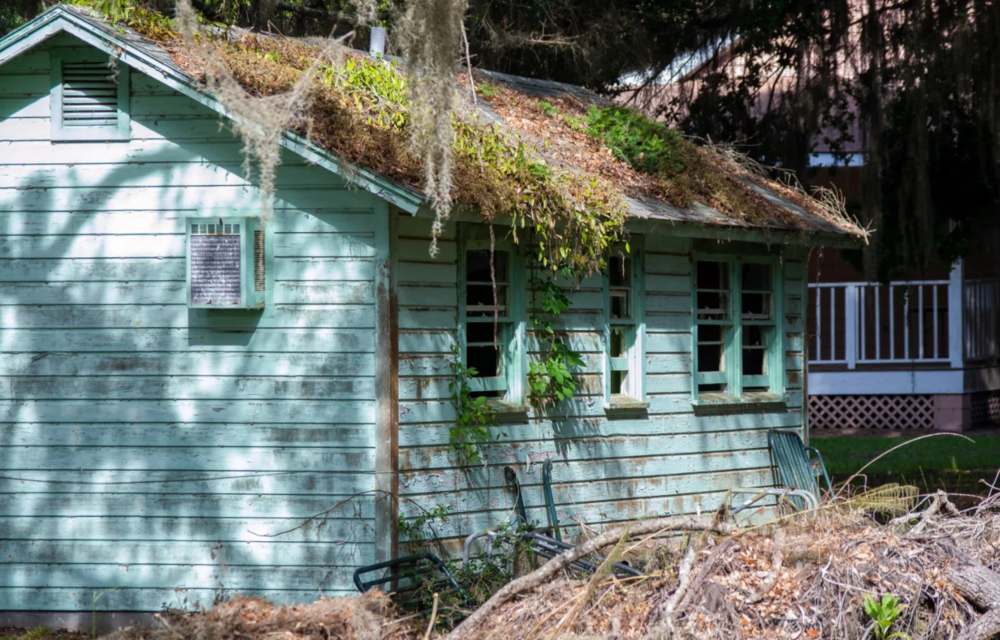
Caption
The Sapelo Island Medical Facility hasn’t been used in over 20 years. The clinic building sits, abandoned.
Credit: Jeffery M. Glover/ The Current

The Sapelo Island Medical Facility hasn’t been used in over 20 years. The clinic building sits, abandoned.
William Daughtry, The Current
Most mornings, Reginald Hall, a 56-year-old Gullah-Geechee descendant, embarks from the mainland on the Katie Underwood ferry to the only place he calls home: Sapelo Island, one of Coastal Georgia’s barrier islands where fewer than 100 full-time residents remain.

A tree leans over a road on Sapelo Island.
Hall likes meandering along the dirt roads through the vast forestry to the serene beach-front. Amid the beauty, though, there is a lingering worry about how the community, which for nearly two centuries has built their traditions on their 434-acre lot known as Hogg Hummock, can survive.
To do this, more than 50 of them have sued McIntosh County.
The thrust of the lawsuit, in which a jury trial was set to begin this week in Savannah federal court, is to force the county to provide Hogg Hummock basic public services that homeowners pay for with taxes but which have been denied them. The trial is on hold, following a 15-hour mediation session last week that may spell a settlement of the long standoff over inequity, part of a pattern of what residents believe is a long-standing desire to displace the low-income Black community and provide space for higher-net-worth vacation homes on the protected enclave.
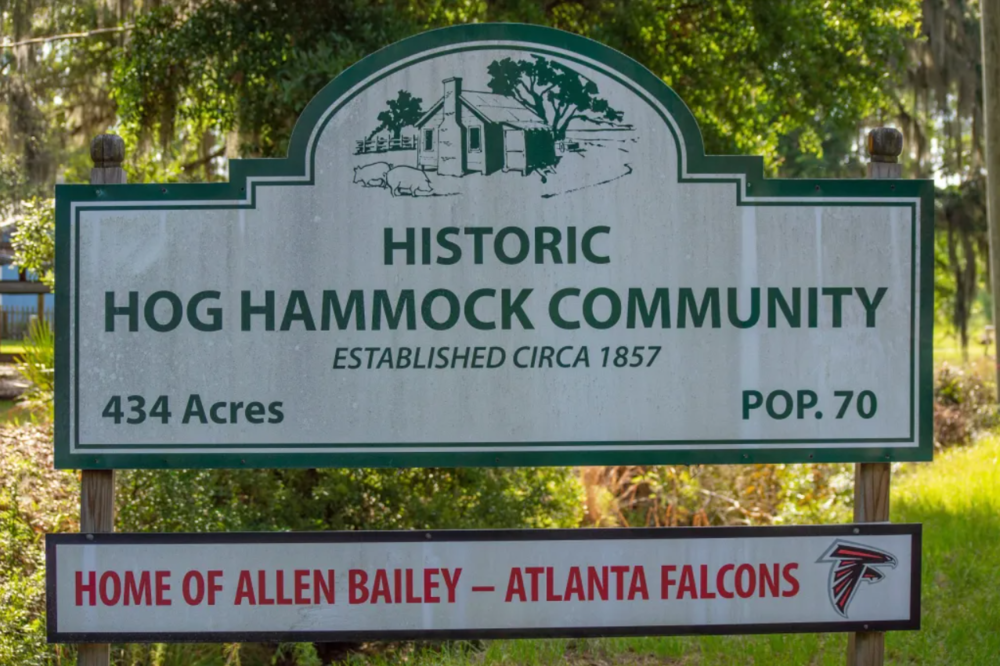
Sign designating the Historic Hog Hammock Community on Sapelo Island.
“We’re going to court to recover our roads, fire, trash and EMS abilities to have the correct representation through taxation,” Hall said. “We’ve got the will to survive on this island.” On the island, “Hog Hammock” signs are pervasive. These are put in place by the county even though residents colloquially refer to their community as Hogg Hummock. It’s a reminder of the disconnect that some residents feel.
The community’s legal battles with the state and local authorities began in 2016. The residents received a $19 million settlement from the State of Georgia in 2020 forcing state agencies to upgrade the transportation facilities that the historic Black community residents and descendants rely on to travel to Sapelo. Now, instead of going to trial, McIntosh County and the plaintiffs’ lawyers have agreed to settle.
“I am glad it’s over,” said Rick Strickland, the Brunswick lawyer for Brown, Readdick, Bumgartner, Carter, Strickland & Watkins, LLP, representing the county. “I’m glad that the parties came to an agreement and that everybody’s relatively happy with the resolution.”
According to Strickland, no formal document has materialized just yet.
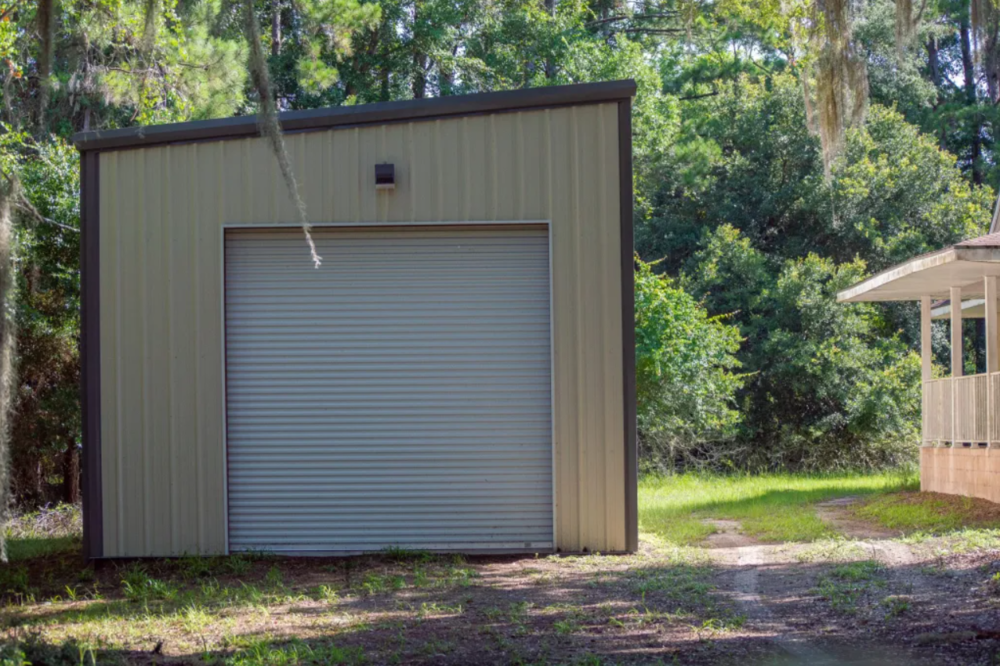
Sapelo Island doesn’t have a professional fire department, but it does have a fire truck for the island’s volunteers. The truck was recently put in this shelter.
The potential settlement’s parameters were approved in a special McIntosh County Commission meeting at 8 a.m. on July 19. A monetary settlement of $2 million was included, although it is important to note that the plaintiff’s law firm has stated they have accrued fees of approximately $8 million.
Under the outline, McIntosh County will work with the state to provide road maintenance on a quarterly basis. The solid waste fee will be reduced by 30%, and the county will provide an emergency medical services truck. The county also agreed to approach the state for a potential lighted helicopter landing area. McIntosh County also will pay to train volunteers for the island fire department as well and will provide a fire truck that must not exceed five years of age than that of the average mainland fire truck.
The agreement includes a three-year property freeze for Hogg Hummock residents.
The settlement remains in process, though. It must be signed by each of the 57 plaintiffs. Hall says he is just “waiting for the ink to dry.”
The federal case, Drayton v. McIntosh County, argues that the county is violating the 14th Amendment constitutional rights of Hall and his fellow plaintiffs. They cite the historic conditions for the Hogg Hummock community, including the fact that the county has provided no trash pickup for Sapelo Island; the county did not provide a fire truck until 2010; and authorities provide no reliable emergency services for the residents. That’s all despite the residents paying county taxes at the same rate as those living on mainland McIntosh County.
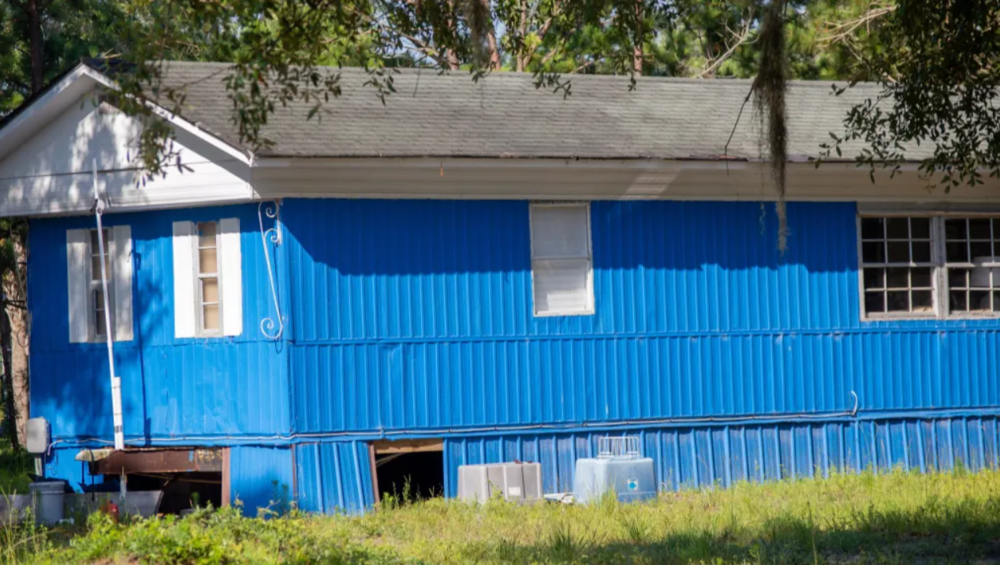
Home located in Hogg Hummock community.
Perhaps the most politically charged of the assertions is the argument by plaintiffs that the county does not enforce its own zoning regulations. While the maximum dwelling size for residents in the Hogg Hummock community can not exceed 1,400 heated square feet, the building inspector for McIntosh County from 1999 to 2016 approved several building permits for structures that are not owned by the local families which far exceed that size.
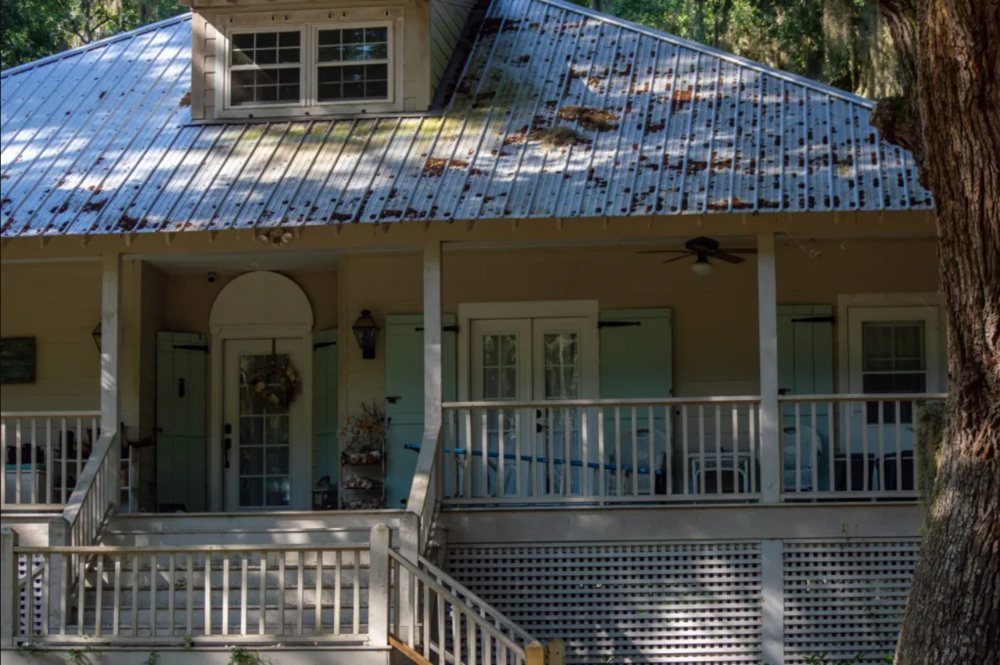
Larger homes are built on Sapelo Island while the county limit in Hogg Hummock for residents is 1,400 square feet. This house, which belongs to former Georgia Southern University football coach Chad Lunsford, is 1,573 square feet, according to county records.
Those include homes owned by Chad Lunsford, the former Georgia Southern head football coach, who sports a home at 1,573 heated square feet, according to county tax assessor records. Dennis Coleman, a Brown University graduate who operates the Dennis M. and Miriam C. Coleman Fund for Black Philanthropy, owns a home tax assessors list at 2,887 heated square feet.
Another structure that exceeds zoning regulations is co-owned by William Hodges, who is not an indigenous member of the Hogg Hummock community but is a member of the Friends of the University of Georgia Marine Institute and a board member for the Communities of Coastal Georgia Foundation, and The Sapelo Island Heritage Authority (SIHA), a government body headed by Georgia Governor Brian Kemp that was created to preserve Gullah Geechee culture.
The state of Georgia owns 97% of Sapelo Island, the other 3% being the 434-acre Hogg Hummock community. The state acquired most of the island from Annemarie Schmidt Reynolds, widow of tobacco magnate R.J. Reynolds, in two discrete transactions in 1969 and 1976.

Reynolds Mansion, operated by the State of Georgia, is located on Sapelo Island.
Plaintiffs in the federal lawsuit, however, do not see the state as a partner in preservation. They view SIHA and local authorities as actors who have either actively or passively contributed to Hogg Hummock’s decline that started decades ago when descendants migrated to the mainland to find jobs and then stayed there to give their families a meaningful quality of life.
That’s the legacy of Maurice Bailey, who is not part of the lawsuit. A Sapelo Island native, board member of SICARS and founder of Save Our Legacy Ourself (SOLO), he found himself slowly cut off from his history when Sapelo Island’s school was shut down and he had to travel to the mainland for his education. “I knew nothing about the county as a kid,” Bailey said. “I had no idea that we were a part of McIntosh County.”
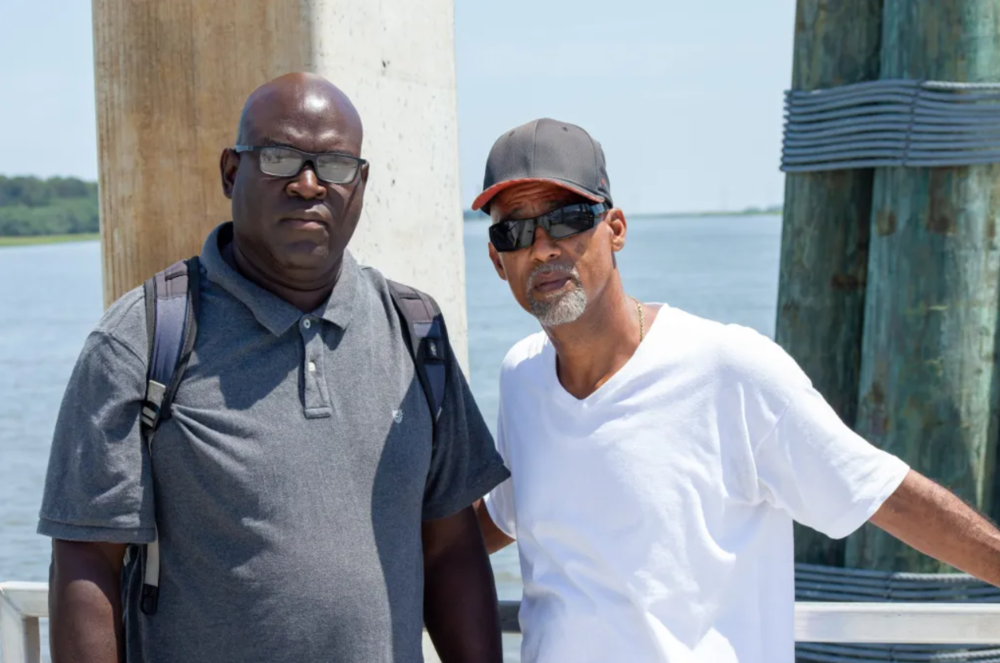
Natives of Sapelo Island, JR Grovner, left, Reginald Hall, right.
For community residents lucky enough to earn a living on the state’s fourth largest barrier island, the lack of resources provided by the county endanger their families and their livelihoods.
JR Grovner, a 41-year-old island resident who runs Sapelo Island Tours and a plaintiff in the federal suit, recalls a female tourist who hit her head on his tour at the Reynolds family mansion, one of the reasons why tourists flock to the island. He had to call LifeStar because of the lack of emergency medical services. The company subsequently had to air-lift her off of the island.
“They charge us a garbage pickup tax. We don’t get that service,” Grovner said. “They charge us a 911 tax, you can call it and no ambulance comes over there. The road grader hasn’t been on the island but two times this past year, but you ask the county about it and they blame it on the state.”
Hogg Hummock residents have long viewed the courts as a venue to air their grievances.
A New York Times article in 2012 reported that Annie Watts, a then 73-year-old Sapelo Island native, had a tax hike of 540%. The increase was to offset new garbage pickup service in the county, a service that was not provided for the islanders. “Sapelo Island residents, however, still have to haul their trash to the dump,” according to the article.
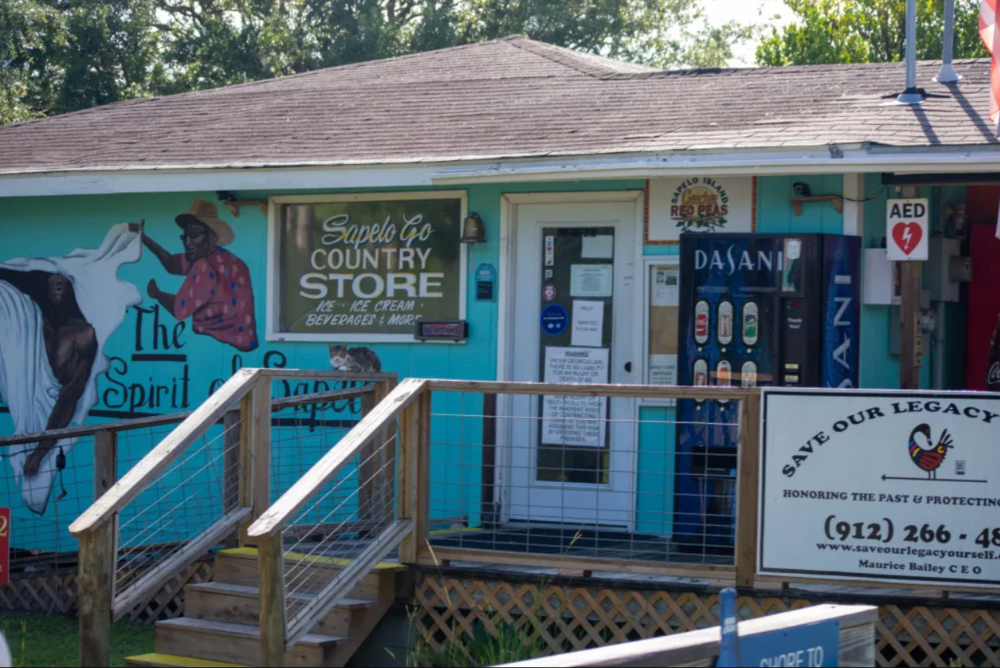
Maurice Bailey owns the only store located on Sapelo Island.
In 2015 Sapelo taxpayers challenged the ad valorem taxes assessed against their properties on Sapelo Island. The consent judgment against the county stated “dramatically rising property tax assessments against Sapelo Island properties in recent years have threatened the viability and survival of this (the Hogg Hummock) community.” The result ended with 34 parcels receiving refunds on property taxes, totaling $138,165.37.
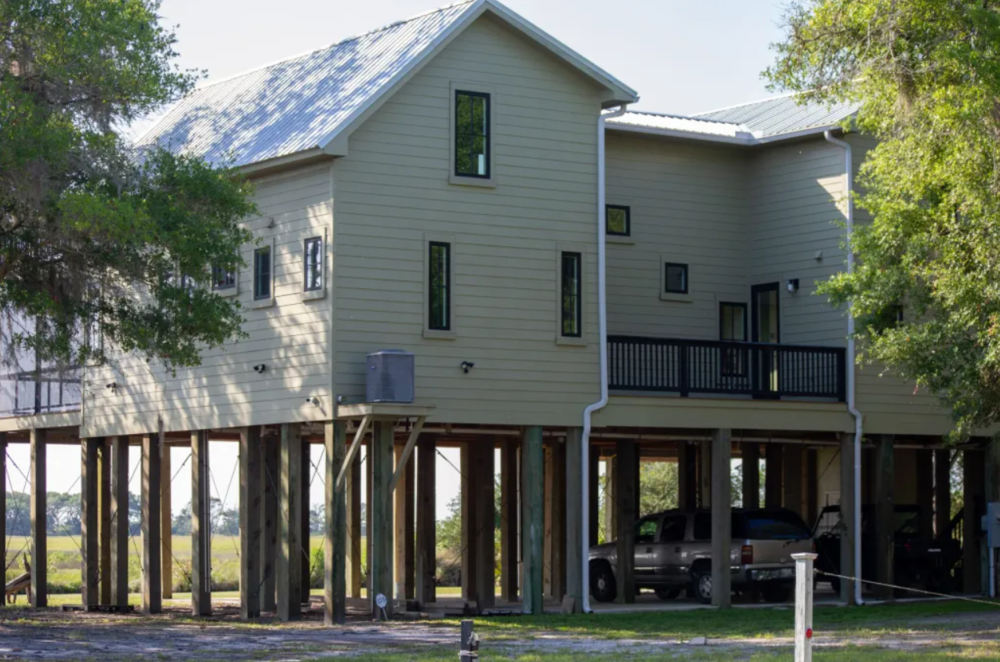
While there are some building limits for those living on Sapelo Island, larger homes are being built. This one belongs to Dennis Coleman and has 2,887 square feet, according to county records.
More recently, tax rates are rising due to more development on Sapelo conducted by outside companies and individuals, according to some descendants. That’s angering Hogg Hummock residents, too.
“Our property taxes will start increasing again and not because of the descendants that are here, but because of other people acquiring land on Sapelo,” Bailey said. “The amount they’re paying for the land, and the kind of housing they’re building on Sapelo that is starting to and will affect our property taxes on this island.”
Not everyone in the community is involved in the federal lawsuit and deep divisions exist among the residents and descendants about the approach they should take to preserving their cultural and property rights.
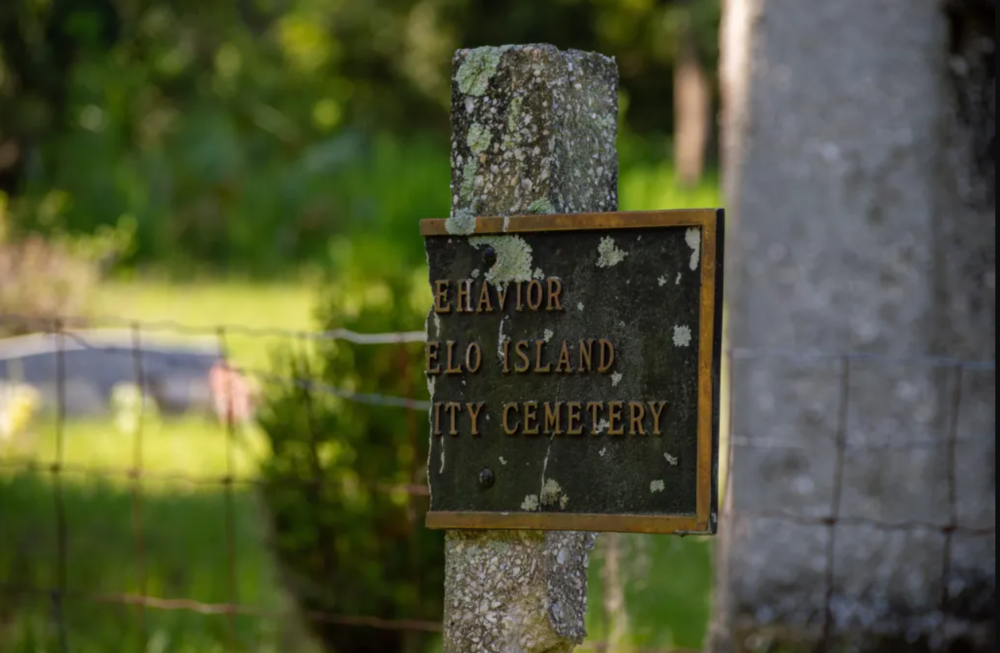
Broken sign to Behavior Cemetery, Sapelo Island.
Sapelo Island has a public library in their former school house which is open Tuesday, Thursday and Saturday. There are two churches and they have one convenience store that is run by Maurice Bailey. The community’s “Behavior Cemetery” is a 4-acre plot. However, residents can only use a little over an acre because of a lack of funding.
There is also a community center next to their fire truck shelter that has been closed indefinitely due to lack of upkeep.
Bailey believes the community should work with the state to achieve its goals. He says life is moderately better than when he was a boy growing up on the island in the late 1970s when the school shuttered, but there is a lot of work needed.
In an interview with Fox 5 in February, Bailey made it clear he wanted to work with the state.
“A lot of people have anger against the state of Georgia,” Bailey said. “They own most of Sapelo Island so you got to work with them, you’ve got to be at peace with them.”
Hall and Grovner vociferously disagree. “How can you work with the enemy? When they’re doing us wrong, how can you work with them?” Grovner said.
Roger Lotson, the McIntosh County commissioner for District Three which includes Sapelo Island, says that during the four years he’s been in office he went to Sapelo every four or five months from his home on the mainland. He said he’s worked to get the community center repaired. However, he hasn’t succeeded.
Nevertheless, in the May primary he soundly defeated Grovner, who had challenged him for the commissioner seat.
Lotson’s goals for the upcoming year is to get health care services for Sapelo.
“We are talking to two different entities about trying to provide some type of health care for the island where someone will come to the island… whether it’s once a week or twice a month,” Lotson said. “Those are the big things that I’m looking to try to accomplish in the next 12 months.”
Grovner isn’t holding his breath. “We ain’t had a doctor’s office on the island since 1985,” Grovner said. “Now they want to sell people dreams to try to get a vote.”
Sapelo plaintiffs in the federal court case decided to push forward with legal challenges after success against the state in 2020.
On Oct. 19, 2020, a settlement was reached between the Sapelo Island residents and the state of Georgia in which the Department of Natural Resources and the DNR commissioner at the time were required to pay $19.4 million to upgrade multiple public infrastructure projects on the island.
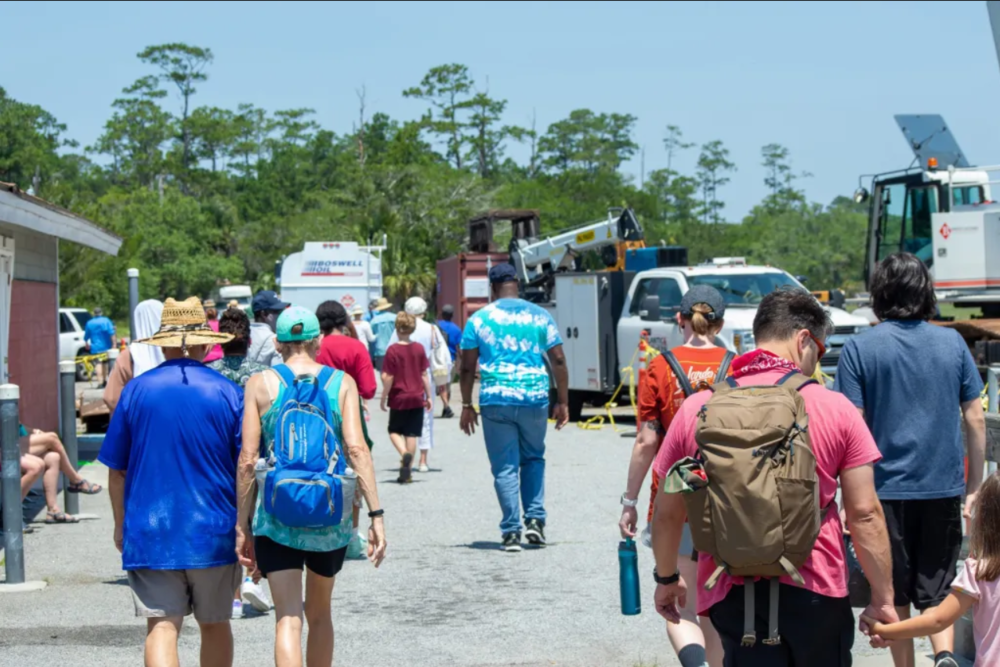
Tourists exit the ferry at the Sapelo Island Visitors Center.
The DNR is the state entity which operates the ferry to and from the island. As part of the settlement it was required to negotiate the ferry schedule with residents, instead of unilaterally creating the boat runs.
A first-phase of repairs included a complete demolition and repair of the Marsh Landing dock facility at Sapelo, build parking at Marsh Landing that is compliant with the Americans with Disabilities Act, a waiting pavilion at Marsh Landing, and an 80-foot gangway for ferry access. Fred Hay, the DNR manager for Sapelo, declined to comment on the litigation but did say the first phase had been completed.
A second-phase of repairs was outlined with a complete demolition and repair of the existing Meridian dock facility and ADA-compliant parking with a completion estimated for December 2022.
This story comes to GPB through a reporting partnership with The Current, providing in-depth journalism for Coastal Georgia.